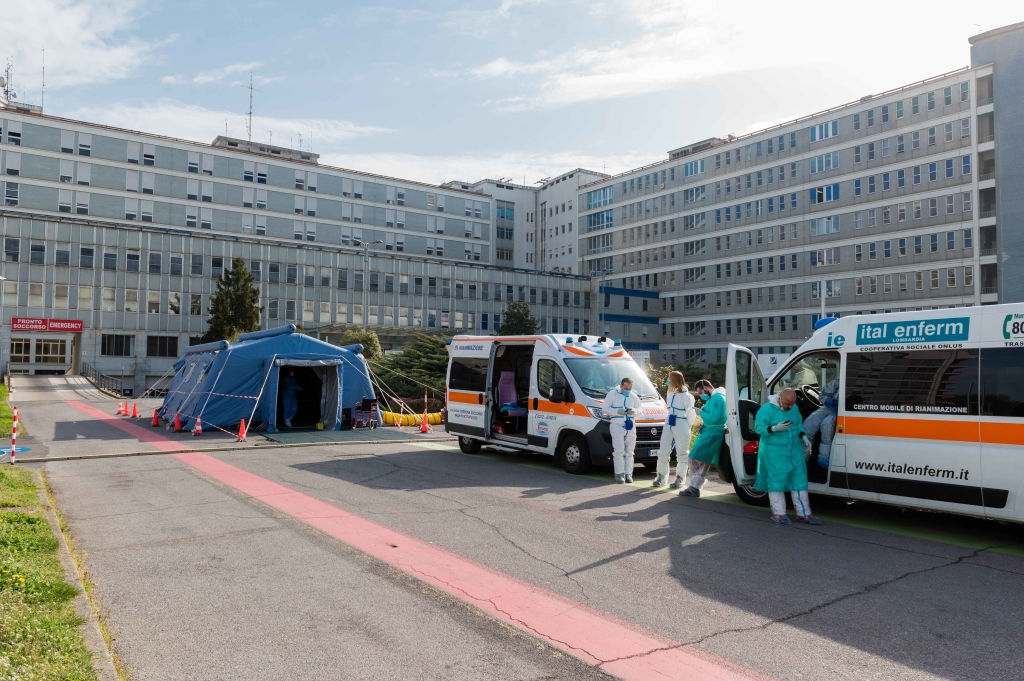Emerging data on Covid-19 transmission is providing some indication of when outbreaks in Europe are likely to end. Countrywide restrictions on movement and gatherings do seem to be helping to slow the spread of the virus, and peaks in rates of infection appear to be likely around 19-22 days after these measures are implemented and enforced.
Our modelling of this new data also indicates that it will then take most countries a further 25-35 days to reach a level of zero new daily infections, if strict restrictions remain in place.
There is still limited data on infection rates during lockdowns, and in some cases we have no usable data. So our forecasts are estimative and likely to change as more data from countries that have restrictive measures in place becomes available. But there are some early trends that support recent statements by governments on the outlook for their outbreaks and timeframes for the lifting of restrictions.
The chart below shows the percentage change on the number of daily recorded cases of Covid-19 for a range of countries with restrictive measures in place. When a country posts a figure higher than 100%, it is because it has recorded more cases than the day before. If the figure is below 100%, the number of daily infections has fallen compared with the previous day. When a country trends below 100%, the speed of virus transmission has peaked. The indicative trend line based on data from across the region suggests that this is after around 19 days of restrictions on movement and gatherings being implemented.

One indication from the data is that measures must be very restrictive, as in Italy, if they are to be effective at bringing down infection rates quickly. Looser measures, such as where gatherings are banned but people are allowed out for non-essential purposes, seem to be less effective. Denmark implemented bans on gatherings on 11 March – the second country in Europe to do so – but they are not particularly restrictive on the movement of individuals, and they have not been widely observed. Seemingly because of this, the rate of infection has not slowed significantly in the country.
The point at which a country reaches zero new daily infections (and so can begin to consider the outbreak to be over domestically) will depend on how quickly governments ease movement restrictions. This is likely to become a pressing issue in countries that begin to see drops in infection rates, as well as in those that are having less success in containing the spread. In a sign of fatigue with restrictions, there is now growing public and political pressure in Italy and Denmark for the authorities to set out plans for lifting measures. These were the first European countries to implement restrictions, around three weeks ago.
Our modelling of infection rates under lockdown conditions suggests that for a country to reach zero new daily cases, it will take around 30 days after it has reached its peak of daily infections. This is if strict restrictions remain in place with no phased easing of measures. In the more likely case that governments do lift some domestic measures, as both Italy and Denmark are planning, it would take longer for a country’s outbreak to come to an end. How much longer will depend heavily on the extent to which measures are eased.
The absolute scale of a country’s outbreak seems to have less influence on the time it takes to reach zero daily infections. For example Italy recorded around 6,000 new daily cases around the time that its infection rate seems to have peaked. As the estimative forecasts from our modelling show in the chart below, from this level it will take around a further 33 days for Italy’s outbreak to end. However, if a country has just 200 daily cases at the point of peaking, it will only take marginally less time (26 days) for it to hit zero new cases.

These estimative forecasts will change as more data becomes available from a broader range of countries. And so we will probably be able to place a greater level of confidence in the projections than we can currently. But these forecasts aim to support organisations in their planning for when particular countries ease restrictions and allow domestic commercial operations to return to normal.
We do not anticipate that limits to international travel will ease significantly any time soon, however. This is because lifting these restrictions would risk exposing a country to ongoing outbreaks in other countries, and so potentially prompt secondary infection spikes. In a sign of this, countries in Asia Pacific, such as Singapore and South Korea, that have contained their domestic outbreaks are still imposing or tightening restrictions on international arrivals.







